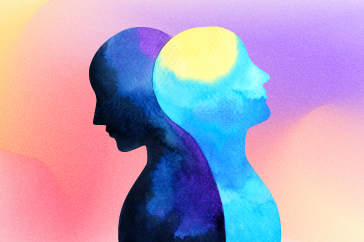A text appears on my phone, reminding me my appointment will start in 30 minutes. I receive another reminder with five minutes to go. The phone rings, and picking it up, I hear the reassuring voice of my therapist asking me how I am doing.
Some weeks things are going very well. Other times I’ve had to call even when I didn’t have an appointment because I had broken down in tears in my car or just had an anxiety attack. This time my therapist and I talk a bit about how well things are going with my job, how my family is doing, and how happy I am. I’m reminded that talking about my mental state is good for me.
This is just a glimpse into my mental health care routine—not so different from others who may be struggling.
Mental and emotional health should not take a backseat to any of life’s routines like productivity at work, healthy eating, getting exercise, or caring for children. Good mental health is essential to productivity, work-life balance, and physical health. This is the focus of Mental Health Awareness Month—mental health problems are real, and help is available.
According to the World Health Organization (WHO), “Mental disorders involve significant disturbances in thinking, emotional regulation, or behavior,” and the list includes anxiety disorders, depression, bipolar disorder, post-traumatic stress disorder (PTSD), and schizophrenia to name a few. Some cases require therapy, others medication. All deserve attention.
Mental health illnesses have been around since ancient times, and some attribute the first known treatment for mental health disorders to Hippocrates and his focus on the “disturbed physiology” around 400 B.C. (PBS). Asylums, lobotomies, and other antiquated medical procedures and treatments claiming to “cure” mental illnesses were pervasive as recently as 50 years ago. It is important to remember that during these periods, families believed this was the best thing for their loved ones, as they had no other way to help them.
Thankfully, these days better treatment is available!
Here are six things I put into practice to feel mentally healthy:
- Sought professional help to deal with anxiety and improve my overall mental wellness.
- Downloaded the Calm app (there are many) and practiced meditation with tranquil music.
- Began to read more about what interested me and crocheted blankets for others as a rote, relaxing task.
- Started exercising again with a routine.
- Set up boundaries at work to focus on family time at home.
- Practiced self-reflection of my day and overall emotional well-being.
Mental health awareness and treatment have come a long way. It’s important to speak up and pay careful attention to how you are feeling and take advantage of the resources and help available to us all.
Finishing my session, I thank my therapist after arranging the next few meetings. I know I can call or text my therapist any time I need to, and I feel better and far more focused on the things that truly matter in my life.
About the author – Abigail Manzo is MarCom Group’s office manager. A former educator, she holds a master’s degree in Elementary Education. Passionate about helping people, she shares her personal story here so others may benefit from her struggles and learn from her experience.


